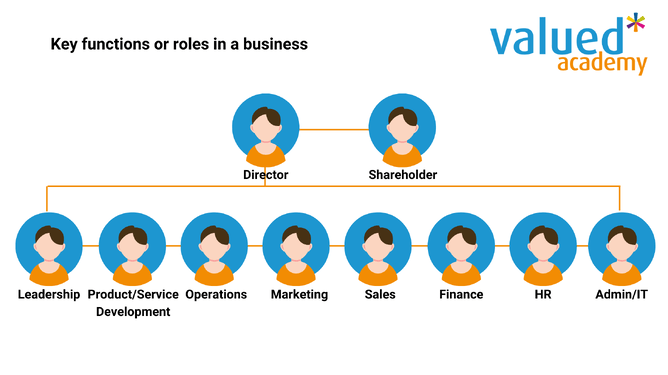On a daily basis as business owners, we need to manage and lead. To do this we wear a number of different hats, each catering to a different specialism in our business. Today we want to guide you through these and offer our ideas on how to cope with them.
Check out the video below and why not subscribe while you're there for future updates.
What are the different types of ‘business hats’?
Let’s start by understanding which key functions or roles we play in our business, as the business owner. Especially at the beginning when we have no staff members to help.
Shareholder Hat
Each business owner is a shareholder. Someone who finances the business and who takes an interest in the profitability of said business.
Director Hat
We have to plan and manage the business, maximising shareholder values.
Leadership Hat
This is the role that implements the director’s plan effectively and leads team members.
Product and Service Development Hat
This is where we design or source the products or services we choose to sell.
Operations Hat
Here we manage the day to day workflow of the business, making sure everyone has what they need, when they need it to efficiently carry out their work.
Marketing Hat
This is where we campaign to generate leads for the sales team.
Sales Hat
We then convert those prospects into customers effectively.
Finance Hat
We are responsible for the management of our business money through budgeting and analysing our cash flow.
HR Hat
We are responsible for hiring and firing, and everything else that comes in between.
Admin and IT Hat
We also get involved, especially at the beginning in creating and managing systems of workflow and paperwork.
How do we hire these out as we grow?
The important thing to remember is that regardless of which hat you are wearing, as the business owner it is you who leads. You who makes decisions.
At the same time, you cannot be responsible for everything, not over the long term as you grow. This is where over time you develop a team that takes responsibility for these key areas of the business, whilst you lead from the top.
Establishing your key employee roles and then finding staff who will be the right fit, helps you to build a team that work in their zone of genius, more efficiently than if you micromanage them, or struggle to do everything yourself.
Fitting a person to a business role is often the mistake that business owners make and we have seen it in our client base. When planning your first, second or one-hundredth hire you must put the business role, the business function ahead of the person.
Here is how to consider that first hiring process, through the key functions, or 10 hats.
You remain the Director and Shareholder, then the remaining eight functions, or hats; leadership, product/service development, operations, marketing, sales, finance, HR, admin and IT become your first hired department heads.
Write down the key responsibilities and job roles of each department head into an organisational chart. This clearly defines tasks and responsibilities (even job descriptions) and gives staff and departments respectful but not concrete boundaries, meaning your team develops in a more harmonious and effective way. It also gives you opportunity as the director to hand out key performance indicators (KPIs) to team members who manage the day to day, creating an opportunity to scale.
As sole traders we readily wear these hats, needs must and you will often find that your first hire and maybe even your first few hires, don’t quite feel like you have fully handed over. Often because it is hard to let go of what has essentially been your baby. It is important that you do, that you allow for a culture change so that you can concentrate on leading from a directorial position and handing key functions to persons of responsibility to manage and report back on.
What if you aren’t ready to make your first hire?
This is where you need to spend some time looking at what you enjoy, what you are good at and can outline as your own zone of genius. You outsource the rest. So, if you struggle with your bookkeeping on a day to day business, then outsource it. If you struggle with your admin and IT, then outsource it. Outsourcing is a great way to get the help you need on a budget.
Remember outsourcing can include software implementation, as well as freelance help. Our advice is to consider your budget, consider where you need the most help and factor the outsourcing of that task, or set of jobs in your budget. Creating your budget at the beginning of the year will help you work towards the financial means to make that outsourced software or freelancer happen.
Looking to define the organisational structure of your business going forward?
Then contact us today, or book your discovery call here.



